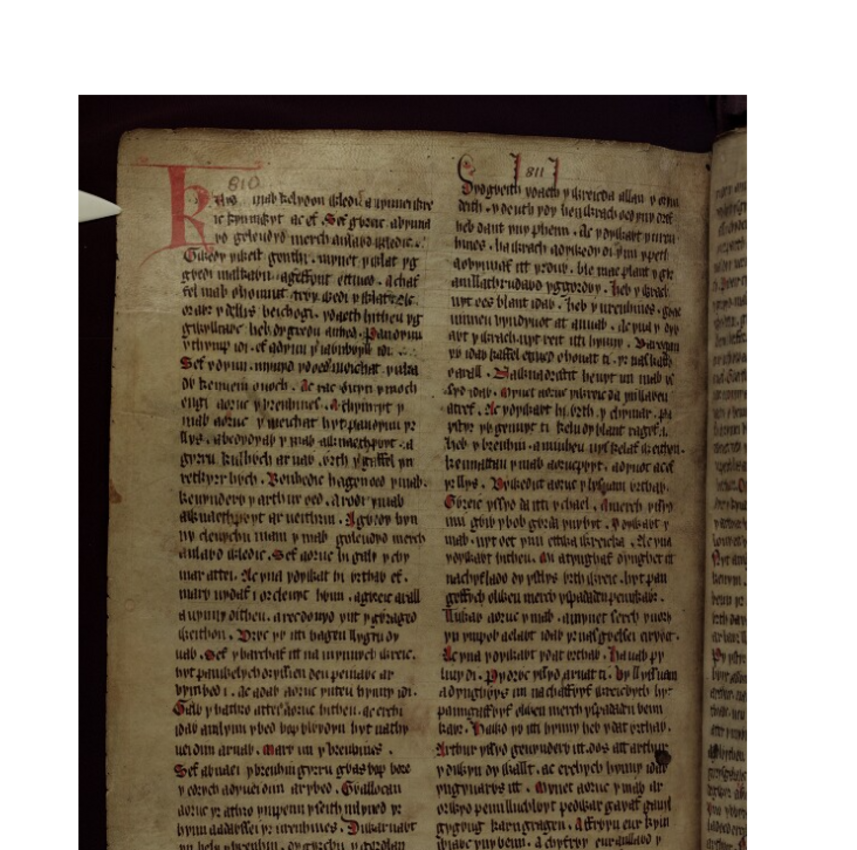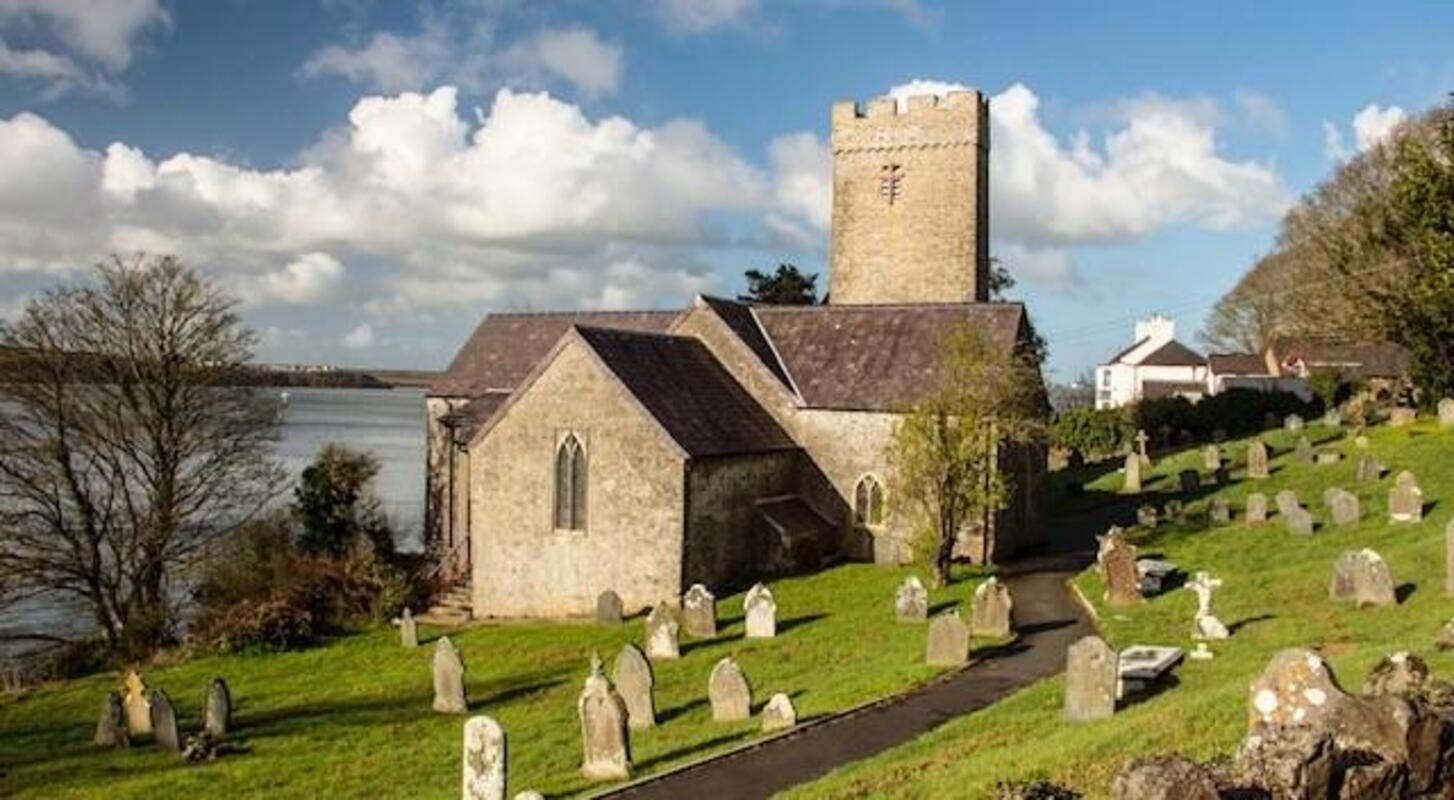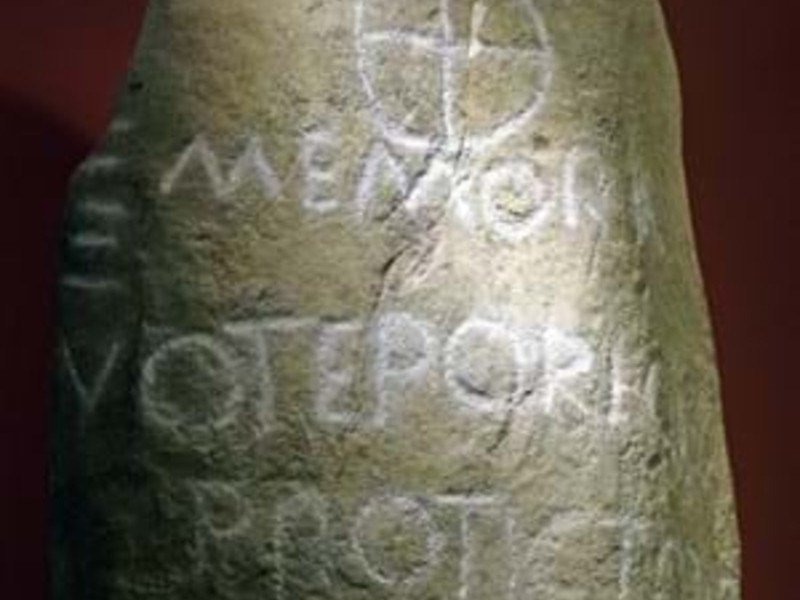Cydfan, Son of King Arthur
Cydfan is a minor character in the Arthurian legends who appears in just a single source. Yet despite this, he was ostensibly an important figure in that he was the son of King Arthur himself. In this article, we will examine what we know about this mysterious character.
Who Was Cydfan?
Cydfan appears in a document known as Bonedd y Arwyr. The actual manuscript dates to the fifteenth century, to about 1475 in particular, but scholars generally agree that its content originates from centuries earlier than that. Some scholars would even place this material from before the turn of the year 1000.
In this document, Cydfan’s name was actually spelt ‘Kyduan’. It often appeared as ‘Cydfan’ in modern sources to bring it in line with modern Welsh spelling.
In this one appearance, Cydfan was presented as the son of King Arthur. His mother was a woman called Eleirch, daughter of Iaen. On a surface level, we can say that nothing more is known about Cydfan directly.
Family
However, we do know quite a bit about Cydfan’s family. In Bonedd y Arwyr, his uncles are listed. These were the brothers of Eleirch. Their names are:
Dirmig Corneu
Gwyn Goluthon
Siawn
Caradog
Ievannwy
Llychlyn
The father of all of these children was a man whose name is written as Iaen. This document does not tell us anything more about Cydfan’s family. However, Iaen also appears along with his children in Culhwch and Olwen, a Welsh tale from approximately 1100. Cydfan is not mentioned there, but this tale does shed more light on his family.
For one thing, Iaen’s sons (and therefore the uncles of Cydfan) were provided in Culhwch and Olwen, but only two names are similar to both lists – Caradog and Siawn. The other sons were listed as the following:
Teregud
Sulien
Bradwen
Moren
The discrepancies between both lists is likely explained, in large part, by the fact that it was not uncommon for people in the sixth century to be known by more than one name. Furthermore, some of these are clearly epithets denoting locations, such as ‘Llychlyn’ in the list from Bonedd y Arwyr.
In any case, we can see that Cydfan had a large family and they were apparently all allies of Arthur, given that they are listed as such in Culhwch and Olwen. This alliance was so close that Arthur even entered into a union of some kind with Iaen’s daughter, which union produced Cydfan.
Was Cydfan a Legitimate Son?
How can we interpret Arthur’s relationship with Eleirch and the son that their union produced? Was Cydfan considered a legitimate son? Did the post-Roman Britons even have a concept of legitimacy?
In answer to that latter question, the answer would appear to be yes. This is supported by an account concerning the succession to Gwynedd after the death of Maelgwn towards the end of the sixth century.
Maelgwn was recorded as being succeeded by his son Rhun. However, Rhun was his son by Gwallwen, a princess from the north of Britain (sister of Urien Rheged’s mistress Modron) whom Maelgwn never actually married. Due to this, some rejected Rhun as the legitimate king, including Elidir Mwynfawr. This led to a succession war between Rhun and several northern kings.
This would indicate that Cydfan may well have likewise been viewed as an illegitimate son, unable to properly inherit the throne, if his mother Eleirch was Arthur’s mistress rather than his wife.
Who Was Eleirch?
Because of this, a lot depends on whether or not Eleirch was Arthur’s official wife or just a mistress. The Welsh Triads provide some helpful information in this regard. According to this source of information about medieval Welsh traditions, Arthur had three wives, each of whom was called Gwenhwyfar.
These triads also list the three concubines of Arthur. The word ‘concubine’ is often seen as ‘mistress’ in online translations of the triads, but ‘concubine’ is more accurate.
However, of these three concubines, none of them are called Eleirch. Based on this, what can we conclude?
One of Arthur’s Queens?
Due to the obvious unlikelihood of Arthur having three wives all with the same name, many researchers have suggested that ‘Gwenhwyfar’ was a throne name or title that Arthur gave to his queens. This means that their personal names would have been something else. Could ‘Eleirch’ have been the true name of one of Arthur’s queens?
Although a tempting idea, the issue with this is that the triads also provided the names of the father of each Gwenhwyfar. None of them were called Iaen. This heavily argues against identifying Eleirch as one of Arthur’s three official queens.
One of Arthur’s Concubines?
On the other hand, how can we explain the fact that Eleirch is not listed as one of Arthur’s three concubines either?
We need to bear in mind the fact that the triads, by their very nature, only listed three of any given category. Occasionally they would list a fourth item if there was a strong reason to do so. However, there is no inherent reason to believe that Arthur only had three concubines. He could have had many more.
Thus, the most likely explanation is that Eleirch was just one of many concubines that Arthur had, and that she was not important enough to be listed in the triads as one of his three most significant ones.
What This Means for Cydfan
With the aforementioned conclusions in mind, what does this mean for Arthur’s son Cydfan? Most likely, it means that he was not viewed as a legitimate heir to the throne. This makes sense of why he was such an obscure character.
Most of Arthur’s other children, such as Amr, Duran, Gwydre, and Llacheu, appeared in Welsh or Latin narratives or poems. Cydfan, however, never appeared in any such text. He only appeared in the one genealogical record which we have already discussed.
This supports the conclusion that he was unimportant to Arthur’s royal family, merely being a prince by means of a concubine rather than one of Arthur’s official wives.
Where Was Cydfan’s Family From?
By looking at the information revealed in Culhwch and Olwen about Cydfan’s uncles and grandfather, we can learn some more about where Cydfan’s family came from.
In this Welsh tale, the sons of Iaen are all said to be ‘men of Caer Tathal’. Since they are all associated with that same location, this strongly suggests that the whole family was based there, including their father Iaen.
Most scholars identify Caer Tathal with a place mentioned in the Mabinogi, a collection of medieval Welsh stories. In the Mabinogi, there is a reference to a place called Caer Dathyl in northwest Wales. It is quite possible that this is the same location as Caer Tathal in Culhwch and Olwen, although there is no direct confirmation of this.
An alternative possibility is that Caer Tathal should be identified with a location in South Wales known as Llanstadwell, dedicated to Saint Tudwal, whose name is another form of ‘Tathal’.
Identifying Cydfan’s Grandfather
The possibility that Iaen was associated with a location in South Wales raises an interesting possibility. In the Life of Saint Cadoc, written in the eleventh century, there is an account found in the Llancarfan charters attached to the back of it. In this account, a certain man named Euan Buurr is recorded as killing two men named Atgan and Aidnerth, sons of his sister.
Cadoc and Illtud deal with the aftermath of this murder, showing that this account definitely takes place in the sixth century, in Arthur’s time.
The reason that this is interesting is that ‘Euan’ is a variant spelling of ‘Ieuan’. The name ‘Iaen’, meanwhile, does not appear to be a genuine name. It is actually the Welsh word for ‘ice’ and does not appear anywhere else as the name of a person.
This suggests that ‘Iaen’ is most likely a corruption of ‘Ieuan’, a well-attested name. If so, then it is likely that Cydfan’s father Iaen should be identified as the Euan of this account, since no other person by that name is known from this era.
Identifying Iaen’s Dynasty
Likewise, the only person from this time and place with a name like ‘Aidnerth’ was Idnerth, a prince of that region. Since Aidnerth is described as being the son of Euan’s sister, this would mean that Euan was Idnerth’s maternal uncle, if the identification of Aidnerth as Idnerth is accepted.
Fortunately, we know quite a bit about Idnerth from the Book of Llandaff, a twelfth-century document. From this record, we know that Idnerth was the son of a woman named Onbrawst, a princess of the kingdom of Ergyng just east of what is now southeast Wales.
Therefore, Cydfan’s grandfather Iaen, or Euan, can logically be identified as the brother of Onbrawst, making him the son of King Gwrgan Fawr of Ergyng. Cydfan, therefore, would appear to have been a descendant of the dynasty of Ergyng. It makes sense for Arthur to have chosen a concubine from an important royal dynasty.
However, as we have already seen, Iaen was associated with Caer Tathal, which was either in northwest Wales or, more likely, southwest Wales. Evidently he moved there before his children (including Eleirch mother of Cydfan) were born, but he would still have been an important prince.
Cydfan’s Secondary Familial Relationship to Arthur
The obvious relationship that Cydfan has to Arthur is that he was Arthur’s son. However, that is not the only familial connection that they had with each other.
In Culhwch and Olwen, Iaen’s sons were said to have been related to Arthur. The text has traditionally been read as saying that they were related to him ‘on his father’s side’, but a number of authoritative scholars today argue that the text should really read ‘on their father’s side’.
Given that Iaen’s sons are depicted here as allies of Arthur, and that Arthur is recorded as having a child with Iaen’s daughter, this indicates that Iaen was of the generation above Arthur. Could he have been Arthur’s uncle?
This suggestion is supported by the fact that Euan Buurr, the likely historical Iaen, was most probably the brother of Onbrawst, as we have already seen. As well as being the mother of Idnerth, Onbrawst was also the mother of Athrwys, one of the leading candidates for the historical King Arthur. Euan would thus have been the uncle of this Arthur candidate.
If these identifications are correct, then this would make Eleirch, Cydfan’s mother, a first cousin of Arthur. This would mean that Cydfan was not only Arthur’s son, but also his first cousin once removed.
Conclusion
In conclusion, Cydfan was a minor figure from the Arthurian legends, appearing in only a single source. He was a son of King Arthur. His mother Eleirch can most likely be identified as a concubine of Arthur. As such, Cydfan was probably viewed as not a legitimate heir to the throne, explaining why the legends of Arthur do not give him any prominence.
Cydfan’s family were close allies of Arthur. It seems that all of his uncles fought alongside him, and the union between Eleirch and Arthur is another manifestation of this alliance. Iaen can likely be identified as Euan Buurr, a prince of Ergyng and son of King Gwrgan. Iaen was a relative of Arthur, likely being his uncle. Thus, this would mean that Cydfan’s mother Eleirch was Arthur’s cousin.
Sources
Bartrum, Peter, A Welsh Classical Dictionary, 1993
Howells, Caleb, King Arthur: The Man Who Conquered Europe, 2019
Wilhelm, James J & Lacy, Norris, The Romance of Arthur: An Anthology of Medieval Texts in Translation, 2015
Bromwich, Rachel & Simon Evans, D, Culhwch ac Olwen, 2012
Parker, Will, Culhwch and Olwen Translation (footnote 117), 2016









